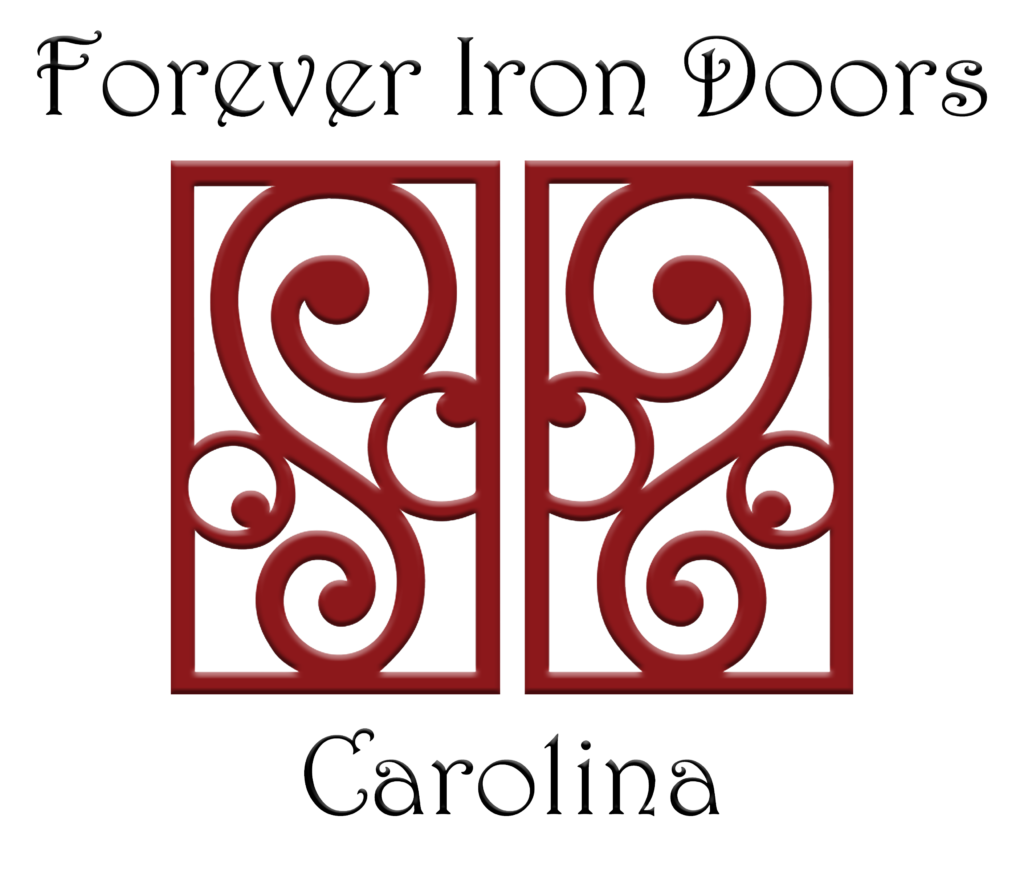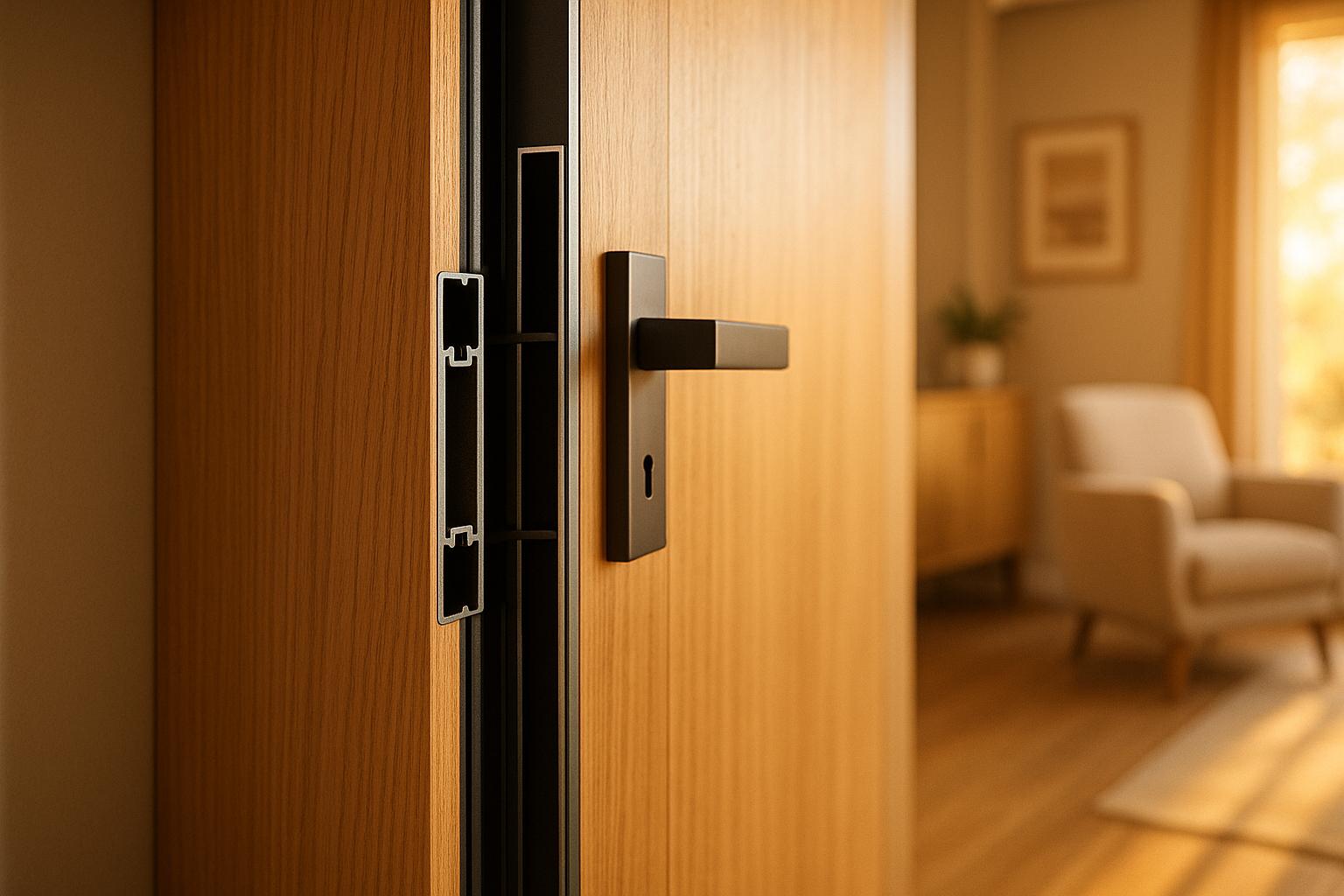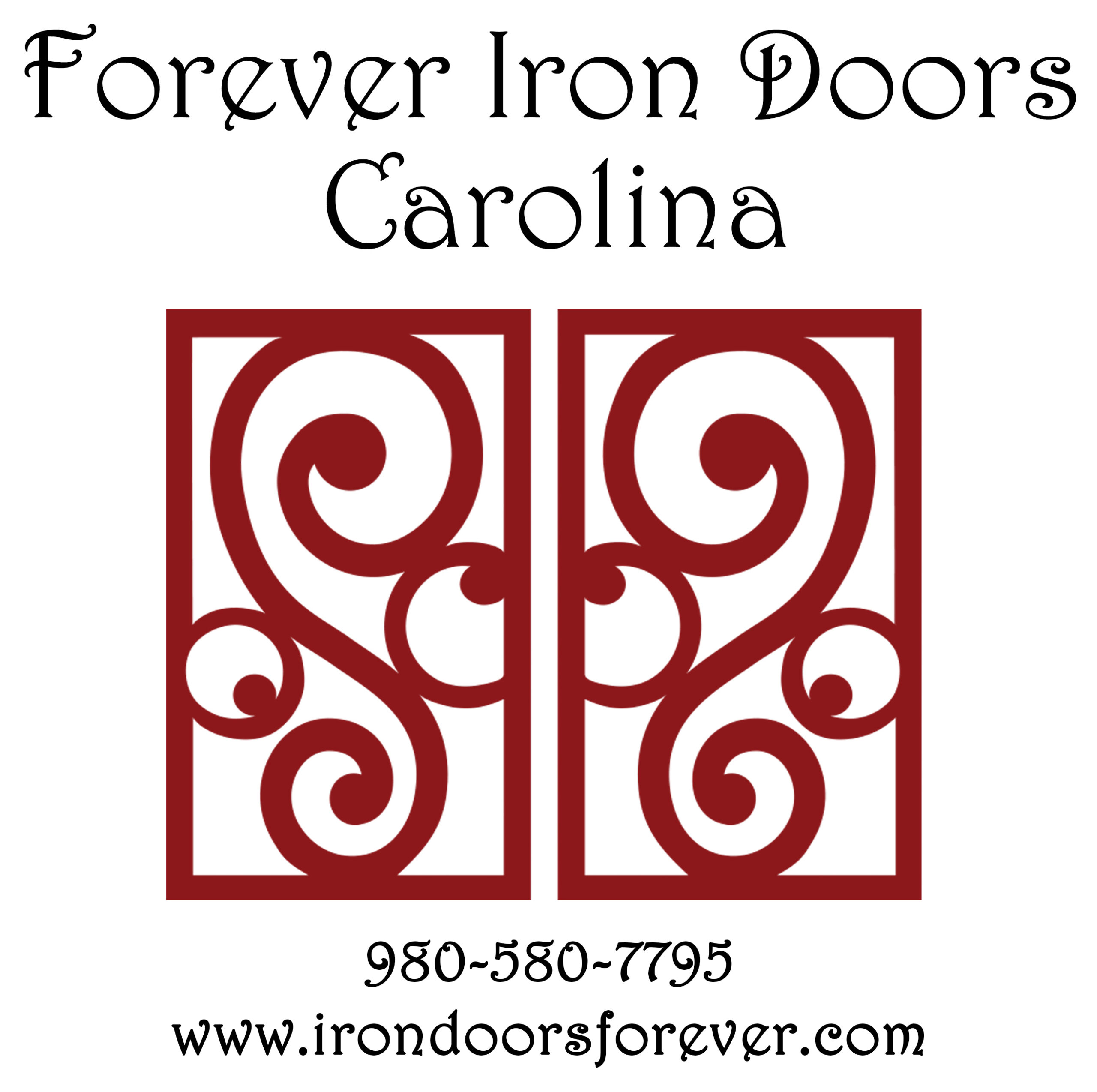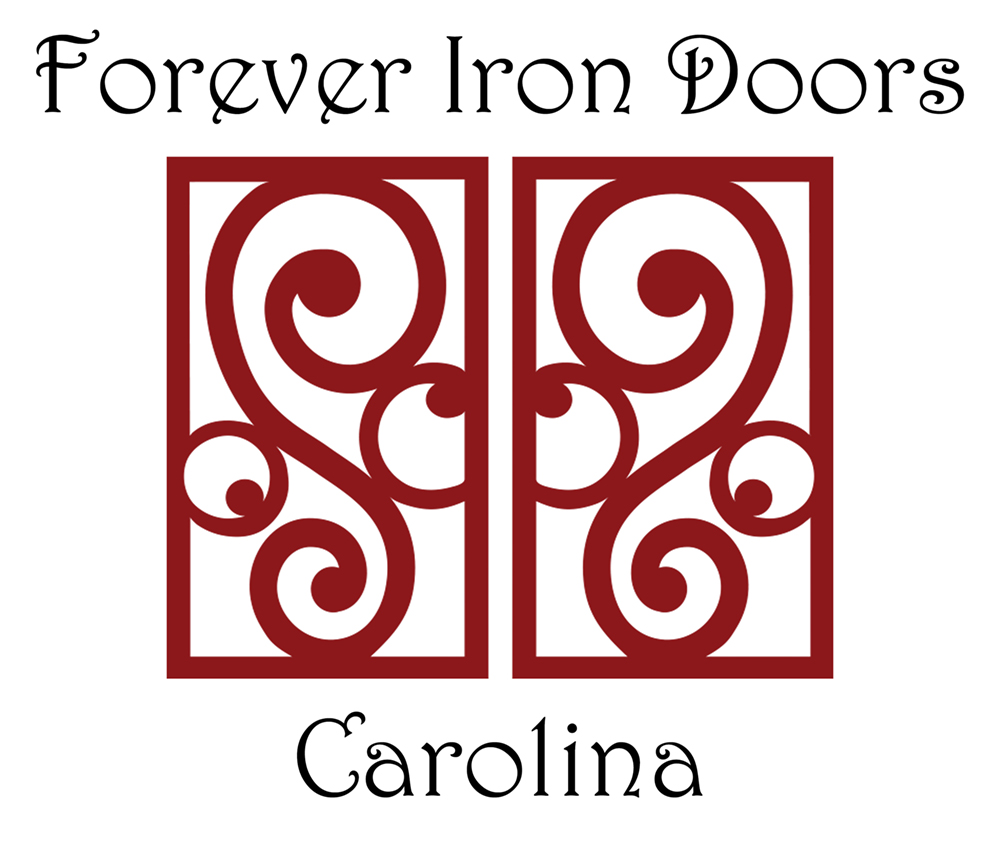Thermal breaks in pivot doors are insulating barriers that prevent heat transfer between indoor and outdoor environments. They improve energy efficiency by reducing heat loss, helping maintain stable indoor temperatures, and lowering energy bills. This is especially important for pivot doors, which can otherwise lose energy due to their larger surface area and gaps around the rotating mechanism.
Key points:
- What are thermal breaks? Insulating materials like polyamide or fiberglass inserted into door frames to block heat transfer.
- Why are they important? They minimize energy loss, reduce HVAC strain, and improve comfort.
- Metrics to consider: Look for low U-Factor (insulation) and SHGC (solar heat gain) ratings.
- Proper installation matters: Ensures sealing, weatherproofing, and long-term performance.
For homeowners, investing in thermally broken pivot doors offers better insulation, energy savings, and reduced environmental impact over time.
How Thermal Breaks Reduce Energy Loss
Thermal breaks help cut down energy loss by disrupting the flow of heat. These specialized barriers slow heat transfer and block the usual pathways heat takes through a door.
The Science Behind Thermal Breaks
Thermal breaks are low-conductivity barriers inserted into the frame to block thermal energy. By eliminating direct contact between interior and exterior surfaces, they stop heat from traveling through the frame. This creates an insulated layer that dramatically reduces heat conduction and temperature transfer.
This concept is similar to how glazing technology works. When heat tries to pass through a pivot door, the thermal break interrupts the process, reducing overall energy transfer. In fact, thermal breaks can cut heat loss by up to 50%.
Addressing thermal bridging is another key step in improving pivot door performance.
Fixing Thermal Bridging in Pivot Doors
Thermal bridging happens when highly conductive materials, like metal, create an easy path for heat to bypass insulation. In pivot doors, this often occurs in the metal frame, which connects the interior and exterior surfaces. Without proper measures, thermal bridges can account for up to 33% of energy loss.
Thermal breaks tackle this issue by stopping heat from escaping, helping maintain a stable indoor temperature. They also prevent problems like condensation and frost on the inside of the door. With a thermal break in place, your pivot door becomes an energy-efficient barrier rather than a source of heat loss.
Once heat flow and thermal bridging are addressed, evaluating energy performance through standard metrics is the next step.
Understanding U-Factor and SHGC Ratings
Two essential metrics for assessing the energy efficiency of thermally broken pivot doors are the U-Factor and the Solar Heat Gain Coefficient (SHGC). The U-Factor measures insulation, with lower values (usually between 0.20 and 1.20) indicating better performance. SHGC, rated on a scale from 0 to 1, shows how much solar radiation passes through the door – lower ratings mean less solar heat gain.
For optimal efficiency, homeowners should look for pivot doors with low U-Factor and SHGC ratings. Features like thermally broken frames, insulated glass, and inert gas fills (like Argon gas) enhance energy performance. These ratings, often provided for products tested by the NFRC, give a reliable measure of how the door performs in various weather conditions.
These energy-saving principles not only improve comfort but also align with the benefits discussed in later sections.
Forever Iron Doors Carolina integrates these thermal break technologies into its custom wrought iron pivot doors, combining elegant design with energy efficiency.
Key Benefits of Thermally Broken Pivot Doors
Thermally broken pivot doors are a smart choice for improving energy efficiency while helping to lower utility costs.
Energy Savings and Lower Utility Bills
Thermal breaks are designed to reduce heat transfer, which means your HVAC system doesn’t have to work as hard to maintain a comfortable indoor temperature year-round. During the summer, they help block heat from entering your home, keeping your air conditioning usage in check. In the winter, they minimize heat loss, making your living space cozier and more energy-efficient. The result? Lower energy consumption and noticeable savings on your monthly utility bills.
Forever Iron Doors Carolina integrates thermal break technology into their custom wrought iron pivot doors. With expert installation, homeowners in North and South Carolina can enjoy the timeless elegance of wrought iron while reaping the benefits of improved energy efficiency.
While energy savings are a standout advantage, thermally broken pivot doors also enhance comfort, durability, and weather resistance – features we’ll delve into further when discussing design and installation considerations.
sbb-itb-cd90297
Design and Installation Considerations
To get the most out of your thermally broken pivot door, it’s not just about incorporating thermal breaks – it’s about selecting the right materials and ensuring expert installation. The combination of quality components and skilled craftsmanship is what guarantees long-term performance and energy efficiency.
Sealing and Weatherproofing Requirements
Thermal breaks are essential, but they won’t perform well without proper sealing and weatherproofing. Effective sealing prevents energy loss and ensures the thermal break does its job. The frame itself plays a key role in weatherproofing, as the thermal break material must form a complete barrier between the interior and exterior. Without adequate sealing, energy loss can increase significantly.
Pivot doors, with their unique rotating mechanism, require different sealing solutions compared to traditional hinged doors. Precise installation ensures continuous weatherstripping, which protects against air infiltration and moisture.
To maintain efficiency, professional installers use specialized flashing and sealant techniques. These methods not only block energy loss but also direct water away from vulnerable areas. Water infiltration can degrade the thermal break material over time, reducing the door’s insulating properties. Proper weatherproofing safeguards both the thermal barrier and the door’s overall performance.
Choosing the Right Materials and Customization Options
The materials used in your door directly influence its thermal efficiency. Durable frame materials like aluminum, steel, stainless steel, and architectural bronze are ideal for supporting thermal break technology.
For the thermal barrier itself, materials such as polyamide, PVC, fiberglass, engineered polymers, EPDM, and rigid polyurethane foam are highly effective. A well-designed thermal break can cut heat loss by up to 50% compared to doors without this technology.
Glass selection is equally important. Insulated glass units (IGUs) with multiple panes, low-emissivity coatings, and low-conductivity gases like argon between panes significantly boost energy efficiency. For example, triple-pane IGUs can achieve U-factors as low as 0.42 BTU/hr/ft²/°F. Warm-edge spacers, made from non-metallic, foam, or composite materials, further enhance glass performance by reducing heat transfer and improving condensation resistance.
Forever Iron Doors Carolina offers a range of customization options, including glass styles, finishes, and hardware, all while maintaining the thermal integrity of their wrought iron pivot doors. Their design team works closely with homeowners to balance aesthetics with energy efficiency. However, even the best materials require expert installation to ensure optimal performance.
Why Professional Installation Matters
When it comes to thermally broken pivot doors, expert installation is critical. The pivot mechanism is complex and demands precise alignment to maintain proper sealing throughout the door’s movement. Even minor gaps or misalignments can compromise the thermal barrier and reduce energy efficiency.
Professional installers know how to handle thermal break materials without damaging their insulating properties. They understand the correct torque for fasteners, the proper application of sealants, and how to seamlessly integrate the door into your home’s existing weather barrier.
Installation practices must also align with U.S. energy standards, which vary by climate zone. Skilled installers ensure the thermal break remains intact, preserving energy efficiency over time. They also stay up-to-date with local building codes and energy requirements, ensuring your door meets or exceeds performance standards.
The installation team at Forever Iron Doors Carolina specializes in thermally broken wrought iron systems. Their expertise in precision fitting, structural framing, and moisture sealing helps homeowners in North and South Carolina achieve the full energy-saving potential of their custom pivot doors.
Thorough quality control during installation includes testing the door’s operation, verifying seals, and confirming thermal performance before the job is complete. This meticulous approach ensures that your investment delivers energy savings and improved comfort from the very first day.
Conclusion: The Value of Thermally Efficient Pivot Doors
Thermally broken pivot doors combine energy efficiency with a sleek, modern design, reducing heat transfer, lowering HVAC demands, and maintaining a steady indoor climate. As discussed earlier, these doors help minimize energy loss while adding a touch of sophistication to your home.
For homeowners in North and South Carolina, where temperatures can vary significantly throughout the year, these doors offer more than just aesthetic appeal. They act as a sturdy shield against the elements while doubling as a statement piece for your entryway.
Forever Iron Doors Carolina excels in crafting custom wrought iron pivot doors equipped with advanced thermal break technology. Their careful selection of materials and professional installation process ensures you get the timeless beauty of ironwork alongside the energy-saving benefits of modern engineering.
Choosing thermally broken pivot doors is an investment in long-term energy efficiency and comfort. These doors not only enhance your home’s energy performance but also provide durability and an elevated sense of style, making them a smart addition to any home.
FAQs
What makes thermal breaks in pivot doors more energy-efficient than traditional insulation?
Thermal breaks in pivot doors take energy efficiency up a notch by adding an insulating barrier right into the door frame. This clever addition helps cut down on heat transfer and minimizes thermal bridging – basically, the way heat sneaks through materials like metal.
While traditional insulation methods often aim to fill gaps or add extra layers, thermal breaks tackle the issue at its core: heat flow through the door’s structure. The payoff? More consistent indoor temperatures, reduced energy costs, and a cozier living space all year round.
What are the key installation steps to ensure thermal breaks in pivot doors work effectively?
To get the most out of thermal breaks in pivot doors, careful installation is key. Start by sealing the door frame and edges to block air leaks and using insulated barriers to preserve the door’s thermal performance. It’s also important to ensure that the hardware is installed correctly so it doesn’t interfere with the thermal barrier.
Accurate framing and alignment are just as critical – any gaps could lead to thermal bridging, reducing efficiency. Adding weatherproof finishes not only boosts energy efficiency but also helps the door blend perfectly with the building’s insulation system.
What maintenance is needed to keep thermally broken pivot doors energy-efficient over time?
Maintaining the energy efficiency and performance of thermally broken pivot doors requires regular attention. Start by cleaning the door surfaces with mild soap and water, then dry them completely to avoid water spots. To keep everything running smoothly, apply a silicone-based or lithium grease lubricant to the hinges and pivot points every six months. This reduces wear and ensures smooth operation.
Additionally, make it a habit to check the hardware for any signs of damage or looseness. Tackling small issues early can go a long way in extending the life of your door and keeping it in top working condition.



